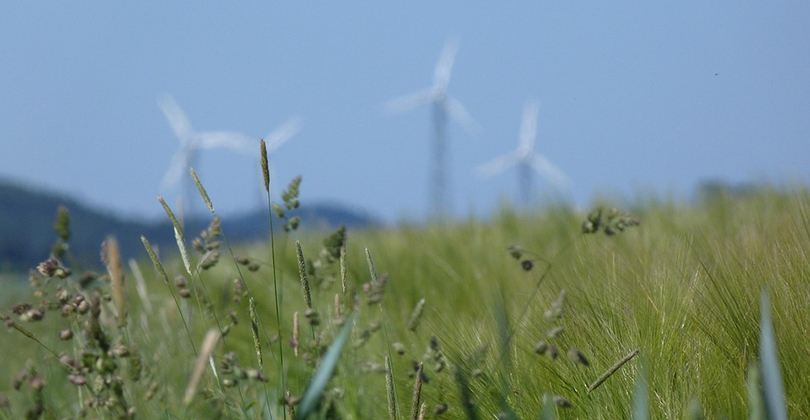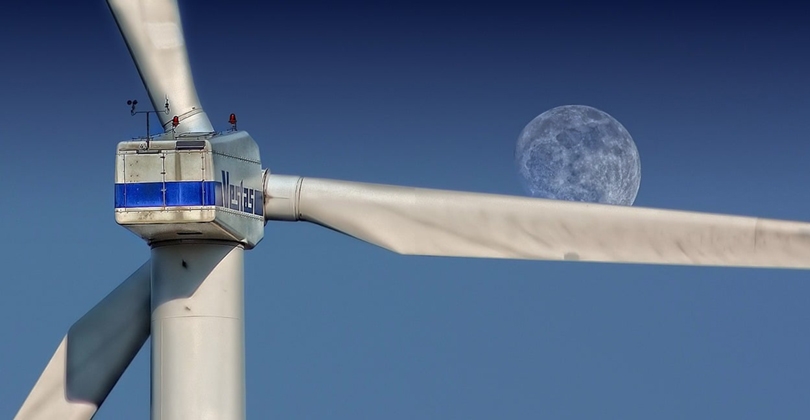With the increasing global demand for renewable energy, wind power generation, as a green and clean form of energy, has been widely used. However, the efficiency of wind power generation is greatly affected by the fluctuation of wind speed, so how to make full use of wind energy and stably convert it into electricity is an important issue in the development of wind power generation technology. As one of the core technologies of wind turbines, the frequency conversion speed control system optimizes the power generation efficiency by adjusting the rotational speed of the wind turbine to ensure the efficient and stable operation of wind power generation.
According to the information reference provided by Power Your Off-gird Home Shop, the frequency conversion speed control system can effectively solve the challenges brought by wind speed fluctuation to power generation, so that the wind turbine generator can be operated efficiently under different wind speed conditions, thus improving the reliability of the whole power generation system and the amount of power generated.

Basics of Variable Frequency Speed Control System
The rotational speed of a wind turbine is determined by the wind speed, the greater the wind speed, the faster the generator rotates, and the smaller the wind speed, the slower the rotational speed. However, due to the irregular changes in wind speed, wind turbines, if not controlled, will face the problem of overspeed or under-speed, resulting in inefficiency of the equipment, and may even damage the equipment.
Variable frequency speed control systems have been developed to cope with this problem. By adjusting the output frequency of the motor through the frequency converter, the rotational speed of the wind turbine is controlled, so that the wind turbine always operates under an ideal working condition, thus maximizing the power generation efficiency.
The frequency control system of a wind turbine usually consists of several key components, including high quality wind turbine itself, the frequency converter, the controller, and the power system connected to the grid. These components cooperate to ensure that the wind turbine can flexibly adjust its rotational speed according to real-time wind speed changes to adapt to different working environments.
At the same time, the frequency conversion speed control system also realizes the protection of the equipment and prevents damage to the equipment when the wind speed is too high. Through this system, wind power generation no longer relies solely on wind speed changes to generate electricity, but through intelligent regulation to ensure that the generator operates efficiently within the optimal operating range.

Working Principle of Variable Frequency Speed Control System
The rotational speed of the wind turbine is directly affected by the wind speed, but there is no regularity in the wind speed changes, so to keep the generator running efficiently in the case of wind speed changes, the frequency conversion speed control system plays a crucial role. The frequency conversion speed control system controls the output frequency of the frequency converter, which in turn regulates the rotational speed of the wind turbine.
When the wind speed is high, the system will automatically increase the output frequency of the frequency converter to increase the rotational speed of the wind turbine, so that the generator can give full play to its power generation capacity. On the contrary, when the wind speed is low, the system will automatically reduce the output frequency of the frequency converter, to reduce the rotational speed of the wind turbine, and avoid the damage of the equipment caused by the high rotational speed.
Advantages of Wind Turbine Frequency Conversion System
The wind turbine's frequency conversion speed control system has multiple advantages, which is why it is widely used in the field of wind power generation.
- High Efficiency: It can adjust the rotational speed of the wind turbine according to the real-time wind speed changes so that it always works in the best state and maximizes the power generation efficiency.
- Stability: Wind speed fluctuation is large, and wind turbine speed is difficult to maintain stability, the speed control system can accurately control the speed of the wind turbine so that it can adapt to different wind conditions.
- Protection: The frequency conversion speed control system has an overspeed protection function, which automatically reduces the rotational speed of the wind turbine when the wind speed is too high, to prevent the equipment from over-speed operation and failure.
Wind turbine frequency conversion speed control system is widely used in wind farms and distributed wind power projects. Under different wind speed conditions, the system can flexibly adjust the rotational speed of the wind turbine to improve power generation efficiency. By optimizing the rotational speed of the wind turbine, the system can improve the efficiency and reliability of wind power generation.
The wind turbine frequency conversion speed control system is an efficient, stable, and reliable technology that how to use wind energy into electrical energy. Its wide application in the field of wind power generation promotes more effective utilization of wind energy resources and helps to realize the green transformation of the global energy structure. With the continuous advancement of technology, the variable frequency speed control system will further optimize the performance of wind turbines and make greater contributions to the sustainable development of renewable energy.
(1).png)
(1).png)